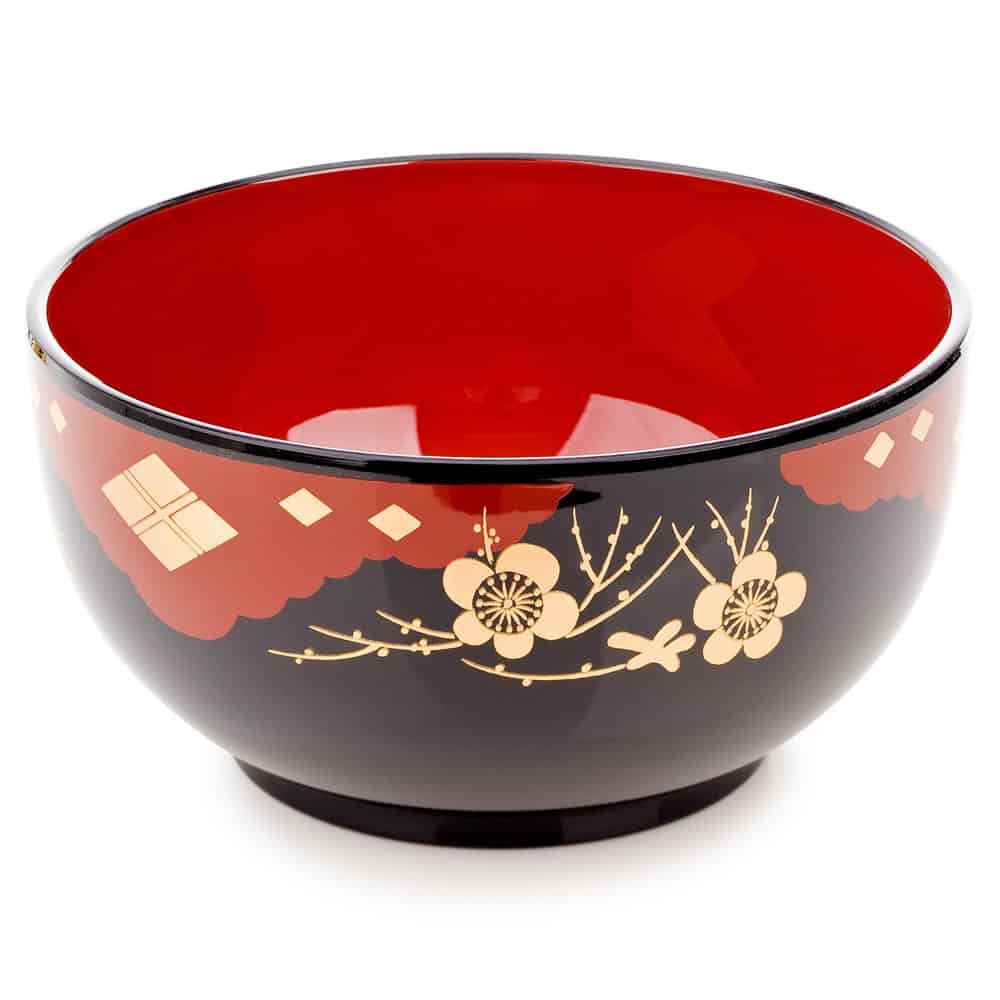Characterised by its lustrous finish and intricate designs, Japanese lacquerware describes a diverse range of products which are covered in lacquer or urushi. Used on a large number of products such as prints, furniture, boxes and dinnerware, the unique and authentic design adds a stylish touch of Japanese style to any home. Producing Japanese Lacquerware Japanese lacquerware is made from the sap of the lacquer or urushi tree, native to Japan. The sap is a close relation to poison ivy and is poisonous to the touch until it dries. In the most basic terms, the urushi sap is a naturally made plastic and is a highly resistant and durable material. Once it has been collected, it is then gently heated to remove any of the toxicity and excess moisture. The resin from the sap then hardens and takes on the same characteristics of plastic after it is exposed to moisture and air. As the production process uses potentially harmful chemicals and materials, skilled craftsman with incredibly steady hands and many years of experience are given the responsibility of handling the lacquer in its purest form. Employing specialist techniques and a five step process of priming the wood, applying the lacquer, polishing, decorating and finishing the product, producing Japanese lacquerware takes great care and attention. If you want to find out more about Japanese lacquer work, our product information guide goes into finer detail, offering more information on the step by step process of the work involved with each product. 

 The History of Japanese Lacquerware The earliest record of lacquer use was in the Stone Age, as people discovered the useful properties of the material, extracting the sap for a more functional purpose of mounting points on weapons such as spears and arrowheads. It wasn’t until the Nara period of AD 710 to 794 that lacquer was used for more decorative purposes. During this time, Japanese lacquer techniques became more refined and the characteristic gold and silver inlay pattern became increasingly popular. During the late Jomon period, people began to recognise how durable the material could be and the resistant and shiny finish urushi sap possessed. Craftsman began to use the material to coat wood, pottery and baskets in the effort to preserve everyday items and help them to last longer. If you are still wondering what makes Japanese lacquerware so special, our informative blog post digs deeper into the production of Japanese lacquerware and explores the different techniques used to make the products and why they still remain hugely popular today. We have a unique collection of Japanese lacquerware available online, including dinnerware and jewellery boxes made from the finest quality lacquer. Whether you opt for authentic lacquer bowls to eat traditional Japanese cuisine such as miso soup or ramen noodles, or you simply want to treat yourself or a loved one to an intricately designed Japanese lacquer jewellery box, our exclusive collection offers something a little bit different. Lovingly handcrafted in Japan, browse our range of Japanese lacquerware online now.
The History of Japanese Lacquerware The earliest record of lacquer use was in the Stone Age, as people discovered the useful properties of the material, extracting the sap for a more functional purpose of mounting points on weapons such as spears and arrowheads. It wasn’t until the Nara period of AD 710 to 794 that lacquer was used for more decorative purposes. During this time, Japanese lacquer techniques became more refined and the characteristic gold and silver inlay pattern became increasingly popular. During the late Jomon period, people began to recognise how durable the material could be and the resistant and shiny finish urushi sap possessed. Craftsman began to use the material to coat wood, pottery and baskets in the effort to preserve everyday items and help them to last longer. If you are still wondering what makes Japanese lacquerware so special, our informative blog post digs deeper into the production of Japanese lacquerware and explores the different techniques used to make the products and why they still remain hugely popular today. We have a unique collection of Japanese lacquerware available online, including dinnerware and jewellery boxes made from the finest quality lacquer. Whether you opt for authentic lacquer bowls to eat traditional Japanese cuisine such as miso soup or ramen noodles, or you simply want to treat yourself or a loved one to an intricately designed Japanese lacquer jewellery box, our exclusive collection offers something a little bit different. Lovingly handcrafted in Japan, browse our range of Japanese lacquerware online now.
